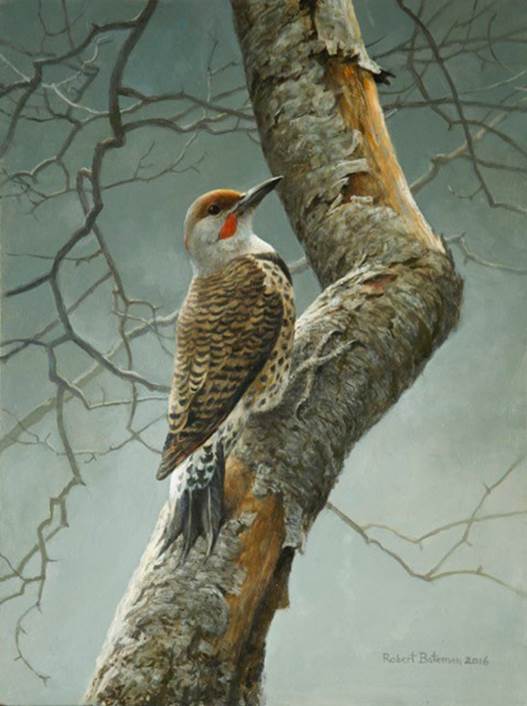Flicker on Apple Tree
Growing up in Ontario, the flicker was one of the common birds in the ravine behind our house. It was bigger than the downy and hairy woodpeckers but I more or less took it for granted, which was my attitude toward robins. The flicker, however, is special among woodpeckers in that it was often on the ground. There, the main activity is feeding on ants. The stomach of one flicker yielded some 5,000 ants.
My Ontario flickers are the “yellow-shafted” variety. The bird has yellow shafts to its wing and tail feathers and yellow wing linings. The males have black moustaches. The bird in the painting is our western variety which has been “lumped” by the experts as the same species (Colaptes aurates, now northern flicker). The quills on the shafts and wing linings of the “western” variety are vermillion as is the moustache. The white rump, which is a field mark when it flies, cannot be seen in the painting because of the folded wings.
- Robert Bateman

